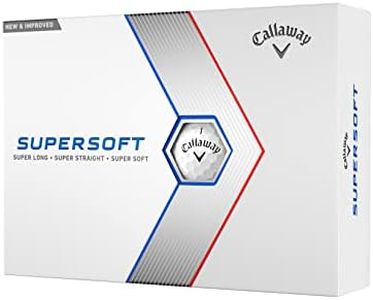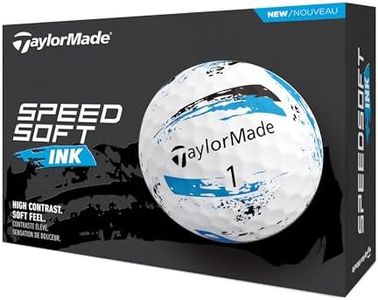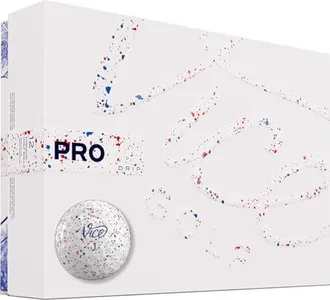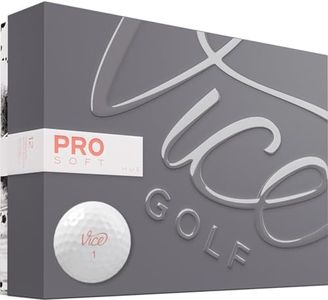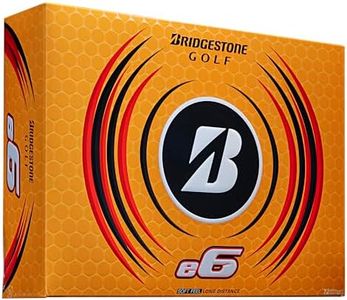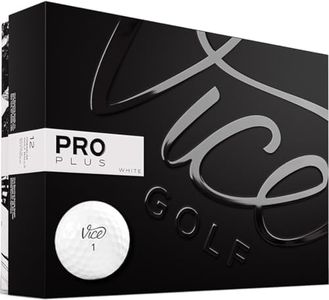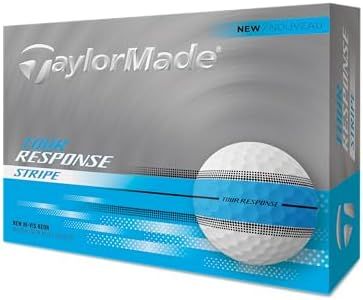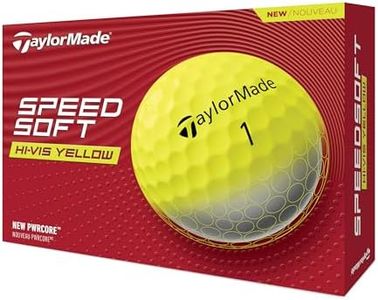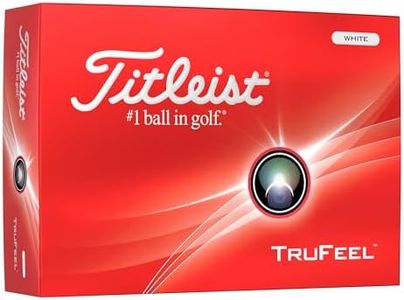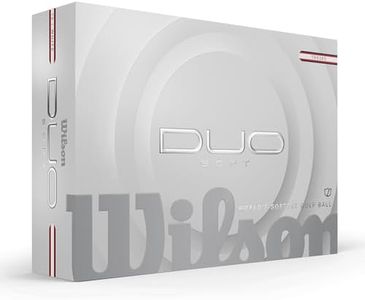We Use CookiesWe use cookies to enhance the security, performance,
functionality and for analytical and promotional activities. By continuing to browse this site you
are agreeing to our privacy policy
10 Best Cheap Golf Balls
From leading brands and best sellers available on the web.Buying Guide for the Best Cheap Golf Balls
When shopping for golf balls, even if you’re looking for cheaper options, it’s important to understand the different features that can affect your game. Golf balls might seem simple, but their construction, feel, and performance can all influence how you play. Knowing your own skill level and style is key to picking the right ball—not just the price tag. Instead of just grabbing the least expensive option, try to balance affordability with features that match your playing needs.Construction (Pieces/Layers)Golf balls are made with different numbers of layers, often called pieces. The most basic balls have two pieces, which means a solid core and a simple cover, while more advanced balls have three, four, or even five layers. Two-piece balls are more affordable and provide distance with less spin, which is good for beginners or high-handicap players. More layers mean more spin control and a softer feel, better for intermediate or advanced golfers. To choose, think about what you need most: distance and durability points to two-piece balls, while better feel and control calls for more layers.
Cover MaterialThe cover of a golf ball is usually made from Surlyn or urethane. Surlyn covers are harder and more durable, making them common on less expensive balls; they’re less likely to cut or scratch and tend to give more distance but less spin. Urethane covers are softer, giving more spin and feel—this is preferred by skilled golfers who want control around the greens. If you’re just starting or looking to minimize lost balls, Surlyn is a good choice. Go with urethane if you already play at a higher level and want more feel.
CompressionCompression measures how much a ball deforms under pressure when struck. Low-compression balls (softer) are easier to compress and work better for players with slower swing speeds, helping them get more distance. Higher-compression balls require more force, so they suit players with faster swings who can generate enough speed for optimal performance. If you’re new or have a moderate swing speed, lean towards low- to mid-compression; if you swing hard or play competitively, consider higher compression.
Spin RateSpin rate affects how high and how much the ball curves in the air, plus how it behaves when landing. Cheap balls are usually designed for lower spin, making them more forgiving and helping with straight shots. This is great for high-handicap players or beginners who want to minimize slices or hooks. Golfers seeking advanced play may need higher-spin balls for better control, especially around the green. For most seeking affordable balls, low spin equals more forgiving shots and extra rollout on drives.
FeelFeel describes the softness or firmness you sense when striking the ball, especially on chips and putts. Cheaper balls are often firmer, which means less feedback through the club. This might not matter to newer players, but as your game improves, you might start to prefer a softer feel for short-game control. Start with what's comfortable for you, and as you notice your preferences, you can adjust toward balls with a feel that matches your style.
DurabilityDurability is about how well the ball holds up after repeated use. Cheaper balls are often made of harder cover materials, which resist scuffs and cuts and last longer even on tough courses or after hitting trees and cart paths. This is especially valuable if you tend to lose balls or play in rougher environments. For most budget-conscious golfers, prioritize durability to get more rounds out of each ball.
